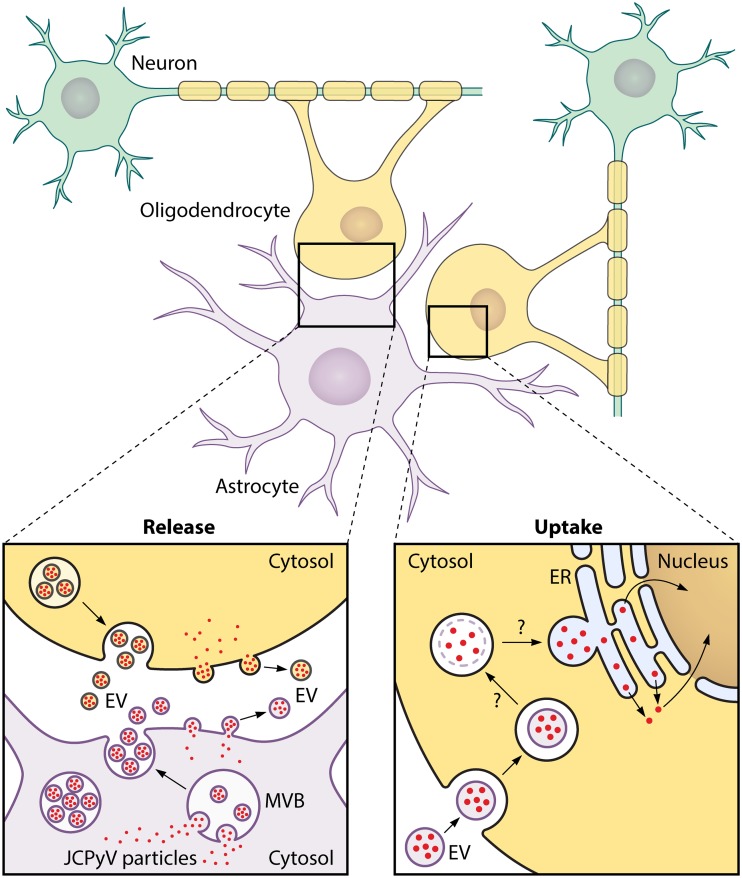FIG 1.
JC Polyomavirus transmission by extracellular vesicles. (Release) JCPyV-infected glial cells (oligodendrocytes and astrocytes) produce extracellular vesicles (EVs) containing multiple JCPyV particles. These JCPyV-loaded EVs are 100 to 200 nm in diameter and have cell host markers that suggest either multivesicular body (MVB) or plasma membrane origin. (Uptake) JCPyV-loaded EVs are endocytosed by oligodendrocytes independently of LSTc and 5HT2 receptors. We conjecture, on the basis of previous studies performed with other EV-transported nonenveloped viruses, that the EV membrane becomes disrupted by endosomal lipases (2, 15). Subsequently, the endosomes transfer their JCPyV particles to the endoplasmic reticulum (ER) (by fusion?). In the ER lumen, JCPyV particles undergo partial uncoating prior to retrotranslocation into the cytosol and eventual traffic of viral DNA into the nucleus for replication, similarly to what has been reported with SV40 particles (14).

